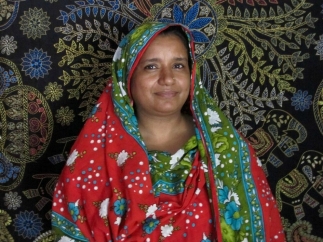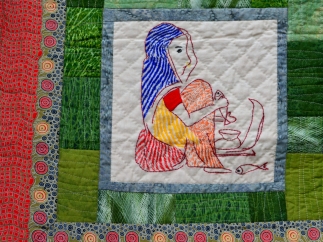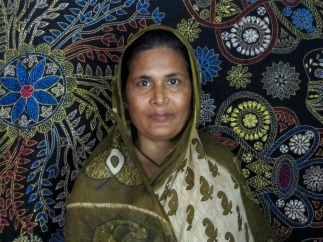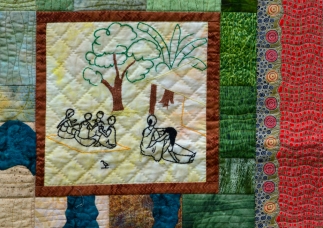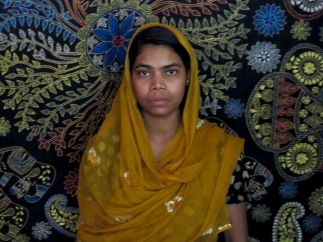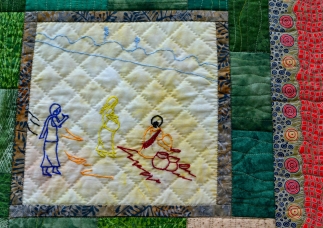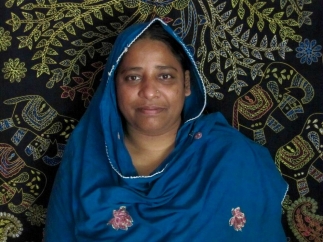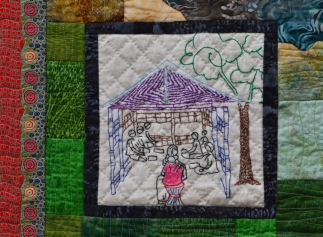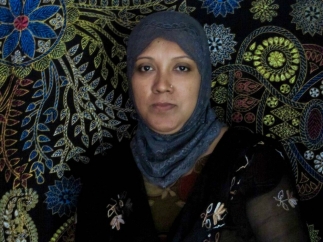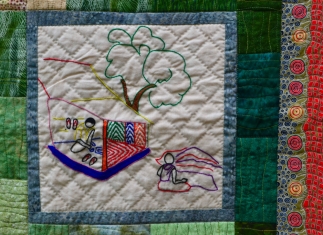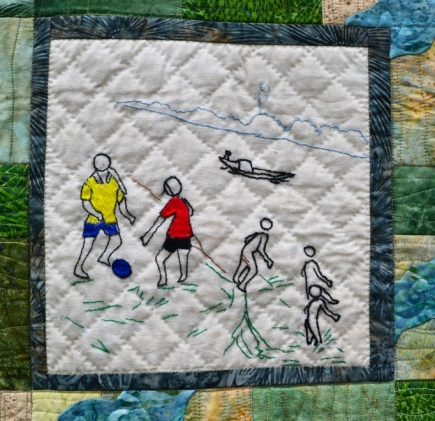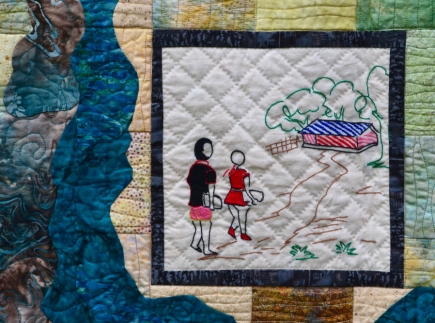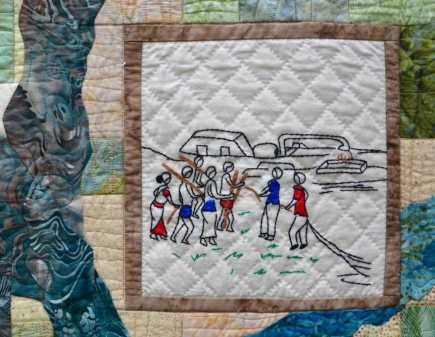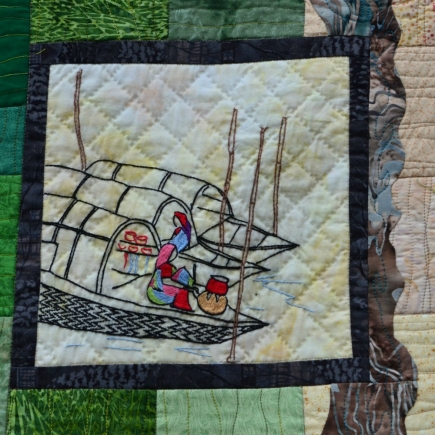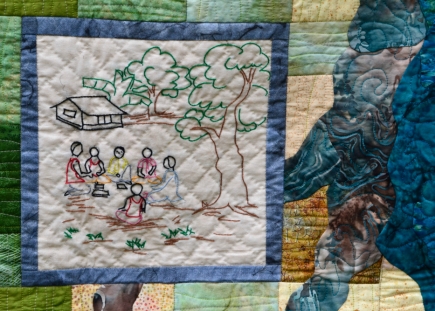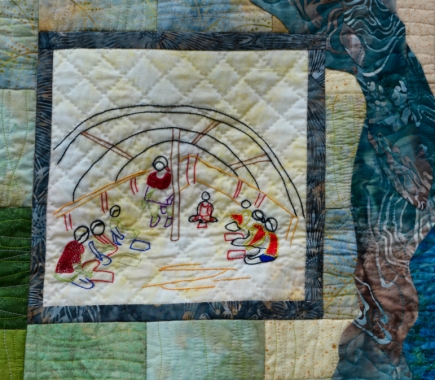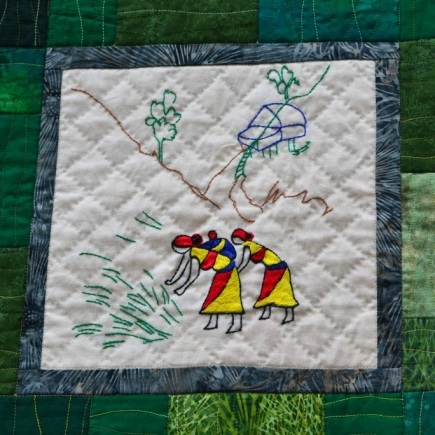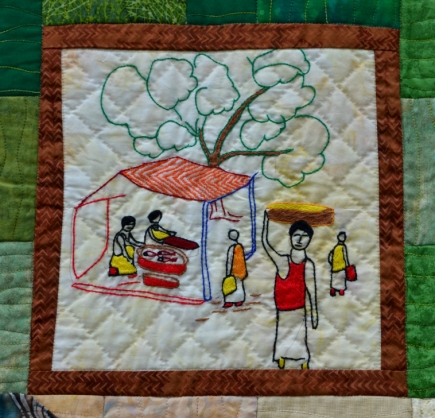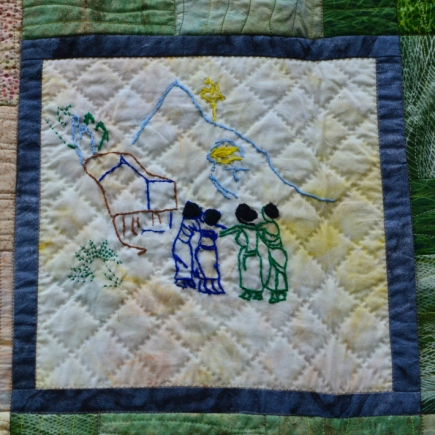River Gypsy Quilt
Background
Background
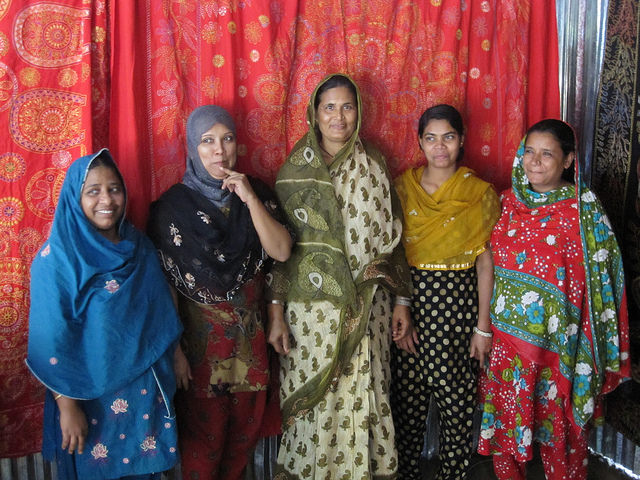 The Bangladeshi artists: Rabeya, Nadira, Hosneara, Mukta and Shahnaj The squares in this quilt were hand-embroidered by women who live in the region of Sunargaon, Bangladesh. They celebrate the life and culture of the River Gypsies, a much-oppressed minority that lives on islands in the Meghna River. The River Gypsies faces extreme discrimination. Many River Gypsies are immigrants and Hindu, in a largely Muslim country. Their children are turned away from public schools. Local construction companies regularly send in teams at night to steal land from the islands, causing erosion and threatening the fishing which provides the Gypsies with their livelihood. When the Gypsies resist they are beaten up – an abuse that was dramatically described by Matt Becker, the first Peace Fellow to work with the Gypsies. The pressures facing the River Gypsies, and the valiant work of the Subornogram Foundation, which advocates for their rights, are described on this page. 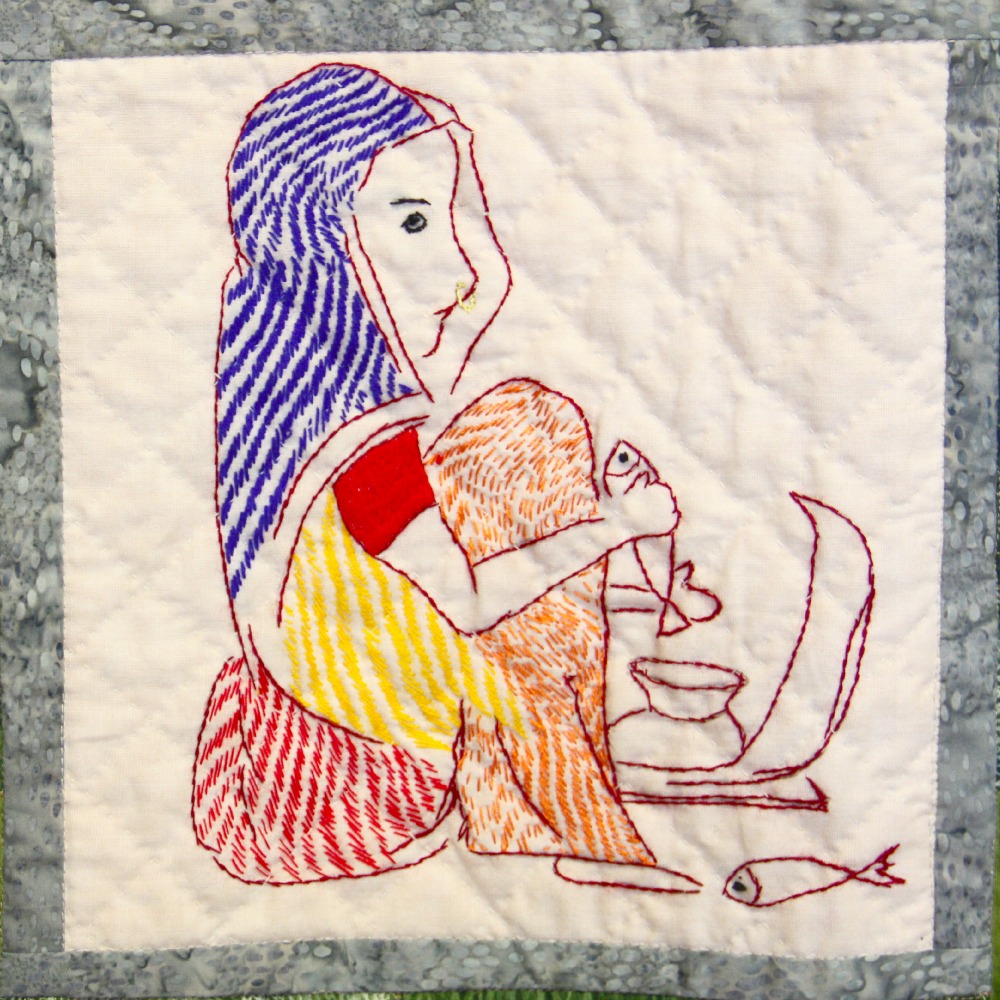 River Gypsy woman cooks fish. The other side of the story is more gentle. The River Gypsies live off the rivers and respect nature. They live on boats. Subornogram has even built a floating school for their children. In 2012, Subornogram brought together a group of women artists from Sunargaon to produce embroidered squares for a quilt that reflect both aspects of River Gypsy life. The five artists, seen left, worked under the auspices of Chris Pinderhughes, the 2013 AP Peace Fellow. Most of their squares focused on village life and culture. One square depicts a floating school. Another delicate square, which is much admired, features a woman preparing a fish for cooking. One square, however, shows a clash between River Gypsies and thugs who have come to steal their sand.  The Sisters Choice quilters from left: Leslie Jo Waters, Cathy Eckbreth, Gail Wentzell, Beth Suddaby, Amy Loar. Peace Fellows Chris Pinderhughes (left) and Matt Becker helped produce the squares in Bangladesh. Below: watch the quilters at work and hear what they learned about the River Gypsies. Chris then brought the squares back to AP, which delivered them to the Sisters Choice Quilting Guild, in Potomac, Virginia. Working under the inspiring leadership of Beth Suddaby, the group produced a design that reflected the major rivers of Bangladesh, with colored shading for forests and sandy shores. They then laid the squares over this spectacular background. Click on the video below to see the quilters at work! AP unveiled the quilt for the first time in Washington in early 2014, in front of the quilters and a small group of friends that included former Peace Fellows Matt Becker and Chris Pinderhughes.(Photo) The quilt then travelled to the Noyes Museum, where it was prominently exhibited for four months and much admired. It has since become a favorite at AP quilt shows, in Washington and at the New England Quilt Museum in Massachusetts. |
River Gypsy Quilt
River Gypsy Quilt
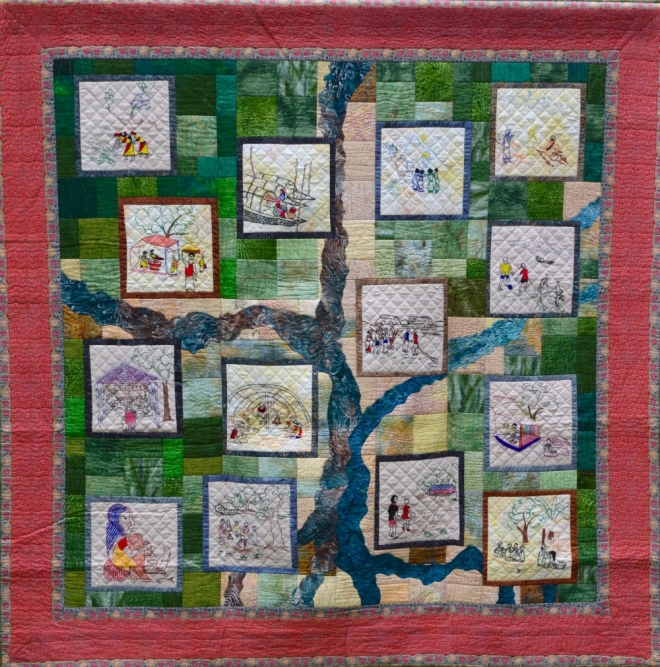 |
|
Shahnaj Akter
|
Woman preparing fish for dinner.
|
|
Hosneara
|
River gypsy children play beneath the trees, while a mother washes clothes. |
|
Mukta
|
River gypsy women collect water from the river.
|
|
Rabeya Begum
|
River gypsies learning the art of embroidery.
|
|
Nadira
|
Chores inside and outside of the home.
|
|
|
Young river gypsies playing soccer |
|
|
River gypsy children approach one of the seven schools built by the Subornogram Foundation. |
|
|
This square shows river gypsies beating off thugs who have come to steal sand from their islands. The thieves use dredgers which are shown at the top of the square. |
|
|
River gypsies on a traditional Bangladeshi Mandoris boat, used for transportation and day fishing. |
|
|
A group of the river gypsies weaving quilt panels. |
|
|
River gypsy children study in their floating school. |
|
|
River gypsy women at work in the fields. |
|
|
River gypsies cook and sell fish at a roadside stall. |
|
|
River gypsy women gather. |

